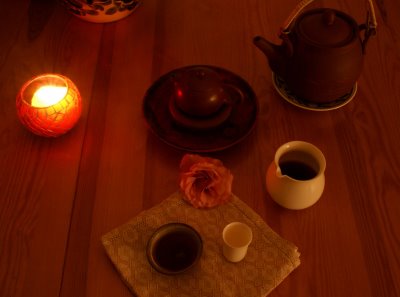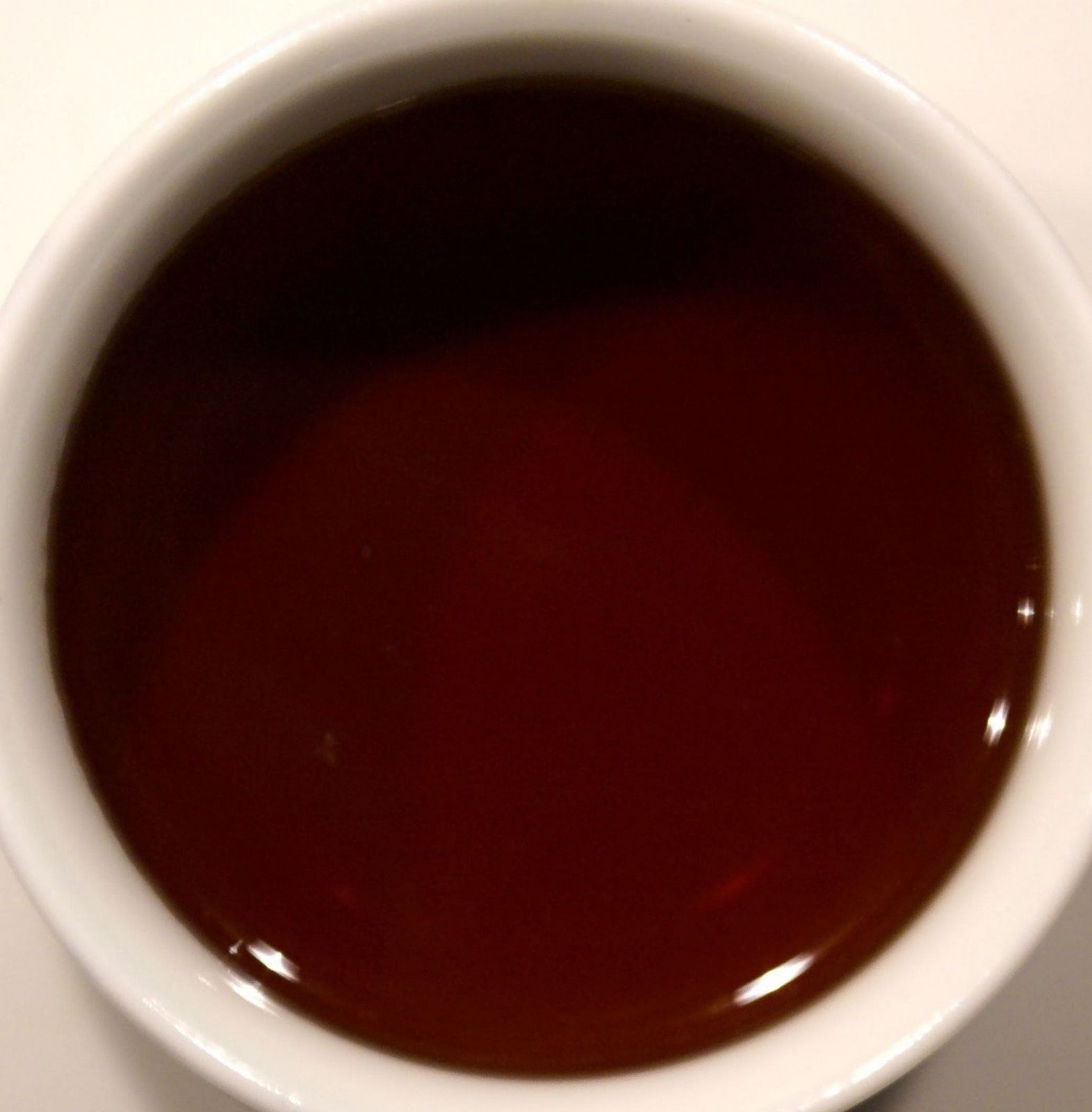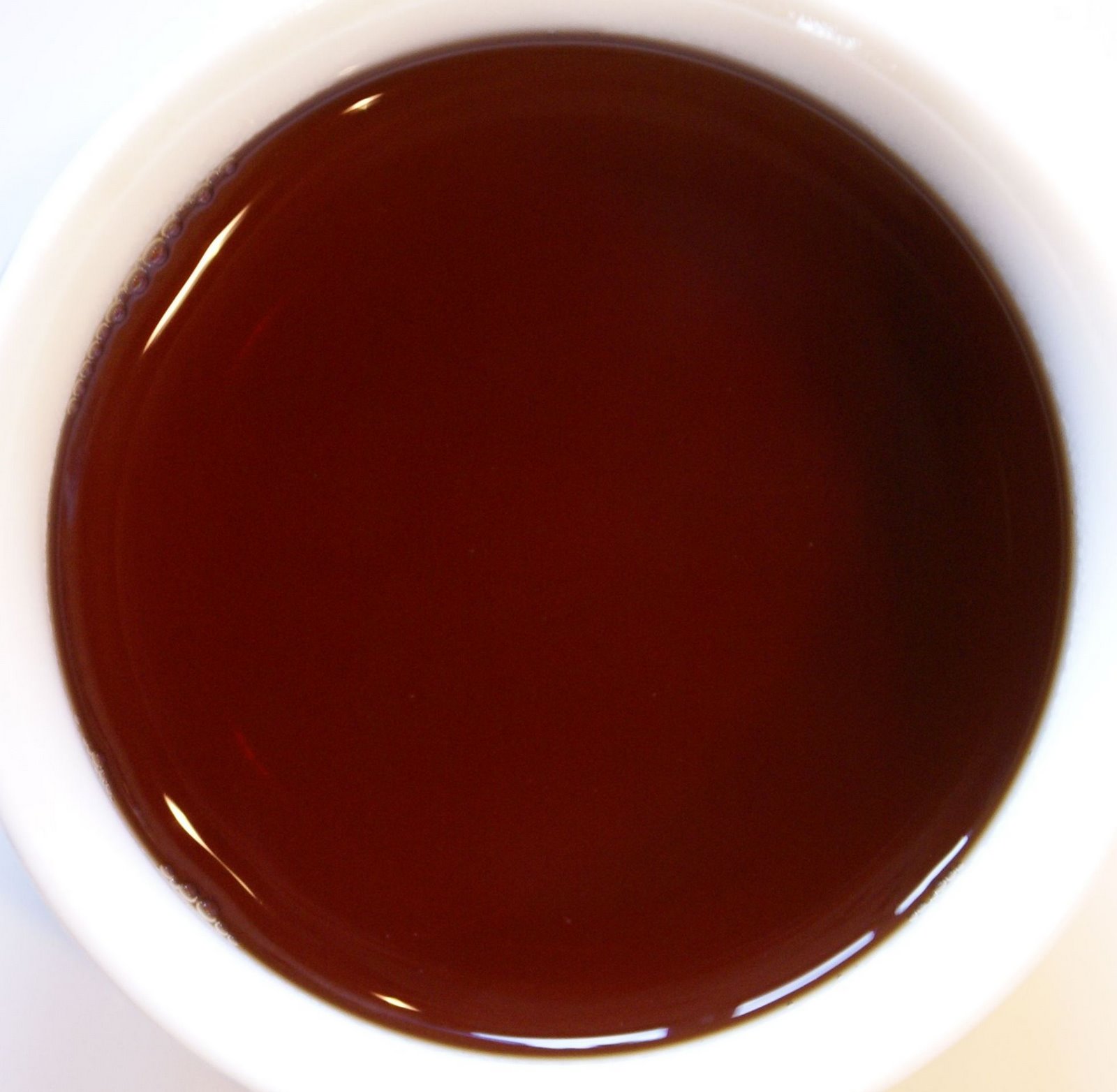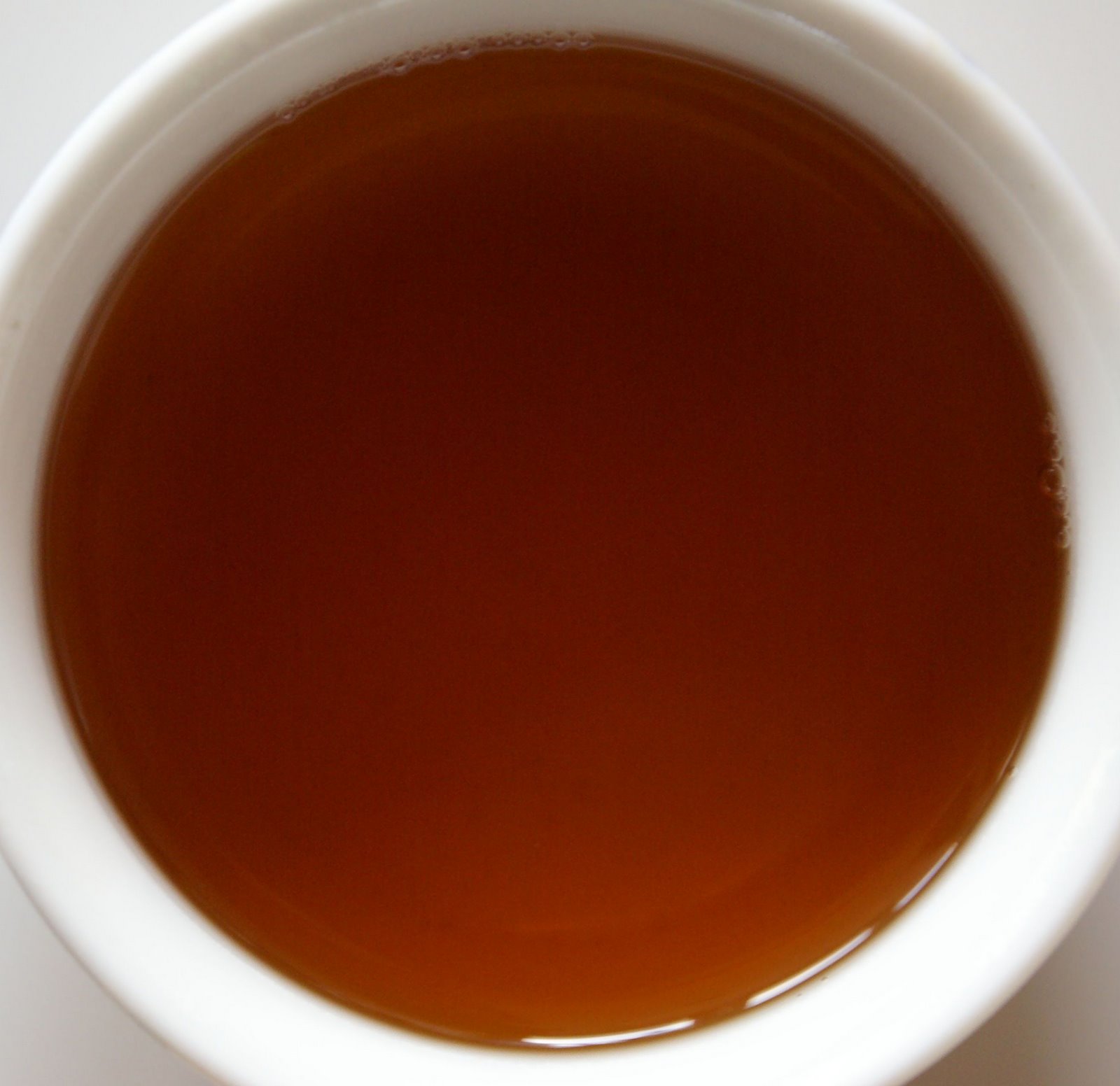1989 Jiang Cheng Brick
Posted on 8 June 2009

Yesterday night, in memory of those who perished on the Square of Heavenly Peace two decades ago, I brewed a very special Chinese tea in a commemorative tea ceremony. A full-blown chaxi (tea setup), such as I never prepare. I slowly brought the best Polish mineral water to a boil in my earthenware kettle, put dry leaves of the 1989 Jiang Cheng Wild Tree Brick in my dahongpao yixing clay pot, and let it infuse slowly. The tea was brewed in silence and no tasting notes were taken.
This outstanding tea, produced a few weeks before the mournful event, is full of unabated elemental force and seemed a more than appropriate homage to the departed. What follows is an account of an earlier tasting session with photographs from today, as I finished off the leaves from yesterday’s session.
—————————————————————-
Dry leaf: While Stéphane Erler on several occasions describes the compression as loose, I found it rather difficult to flake off leaves, and used a largish whole chunk of the tea brick instead. (Consequently, I made a quick rinse with boiling water – something I never do normally – before the first infusion to soften the leaves). It is a very dry brick with a lot of evolution to the dark brown, through-fermented leaves.
and 7 (total 22 minutes – no mistake!).
40s: While the brewing time for this dosage is longish (I was deliberately seeking to extract a lot of power), I was surprised by the very deep brown-burgundy colour, especially given the initial rinse. There is instantly a blissful aromatic moment in the aroma cup, with a warm fleshy softness and sweetness; later notes are of old wood and earth. While this tea is obviously aged, little wet storage is evident. This is a far more concentrated and intense brewing than expected for a #1, although there is relatively little dryness. We are in for a treat.
25s: Still extremely dark. Quite a different balance now, less aromatic without the soft notes of the above, quite earthy and chewy, and on the palate this is dominated by a vegetal, almost tree bark-like bitterness and earthy tannic dryness. Lots of power in this tea! A challenging infusion, not so very much pleasant to drink. This looks like it could continue to age and improve for many years.
35s: More in the style of the first than second infusion. The aroma is sweetish, soft, if less fleshy, and taking on an almost wafery or baked-cakey sweetness. Flavour is still earthy, old-leafy, vegetal. A more balanced finish now, firm but with a bit of sweet huigan. A balanced qi, not very assertive, building up rather slowly.
Instead of continuing with short analytic infusions I let this loose, and brewed almost at will. For several more minutes this shows a very deep colour, but aroma and flavour are lighter (though not light). Still chewy-earthy on finish, but without the intensity and complexity on the palate of the former brews.
 This is an extraordinary creature of a tea. Looking at the expired leaf (see photo above and below), there are still lots of intact whole leaves after 20 years! Really thick with very developed veins. This tea abounds in rough, elemental power, making it easy to believe the declared ‘wild tree’ provenance (how many modern puer can you say this about?). In purely drinking terms, it may lack the elegance (or ready-to-drinkness?) of the 1999 Menghai #7532 but shows an unadulterated old style of sheng puer when no concessions were made for the modern yuppie public and teas were made to last decades. I wouldn’t have liked to be near these leaves in 1989. A majestic tea of authority and austerity. And right for the occasion, I would say.
This is an extraordinary creature of a tea. Looking at the expired leaf (see photo above and below), there are still lots of intact whole leaves after 20 years! Really thick with very developed veins. This tea abounds in rough, elemental power, making it easy to believe the declared ‘wild tree’ provenance (how many modern puer can you say this about?). In purely drinking terms, it may lack the elegance (or ready-to-drinkness?) of the 1999 Menghai #7532 but shows an unadulterated old style of sheng puer when no concessions were made for the modern yuppie public and teas were made to last decades. I wouldn’t have liked to be near these leaves in 1989. A majestic tea of authority and austerity. And right for the occasion, I would say. 



